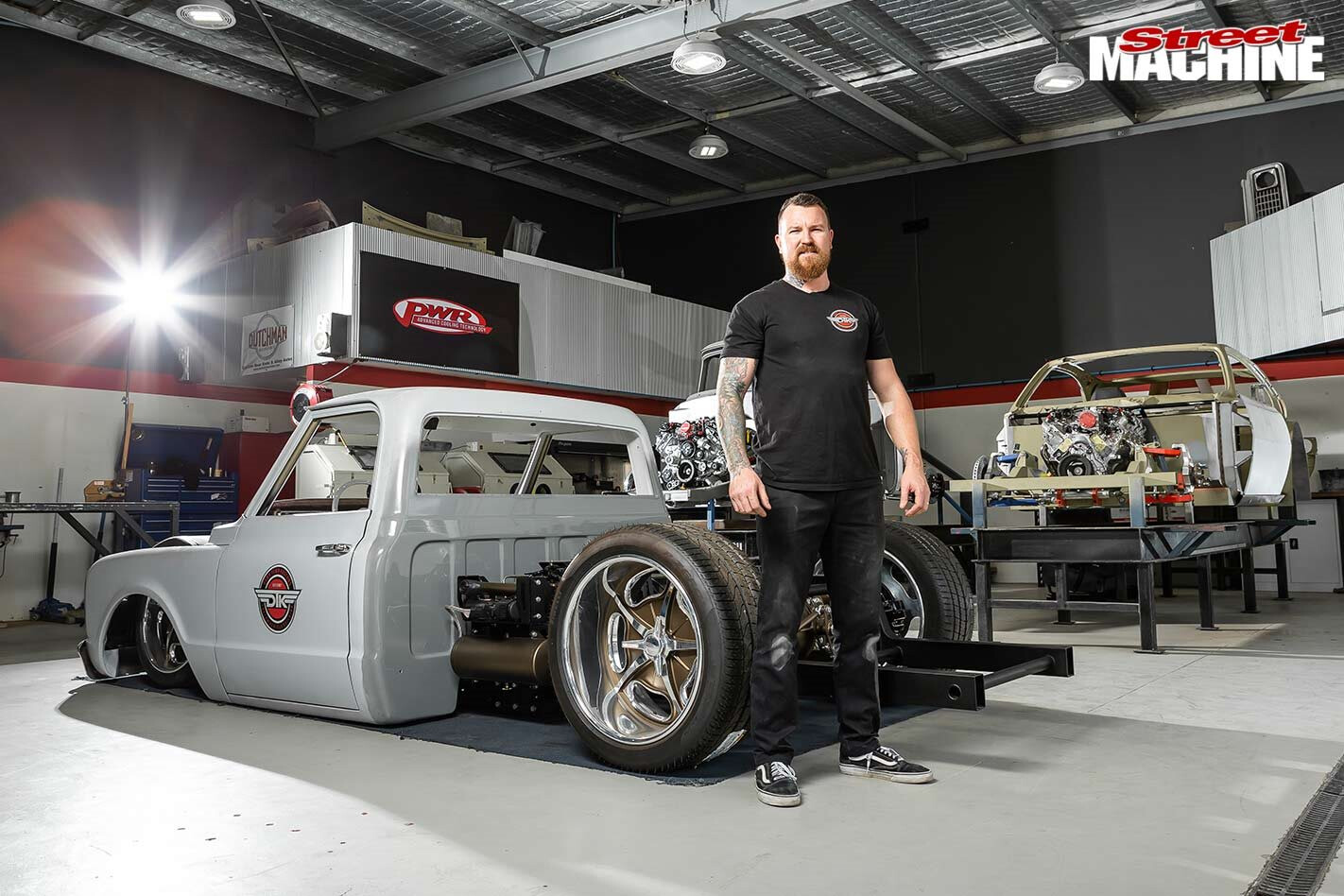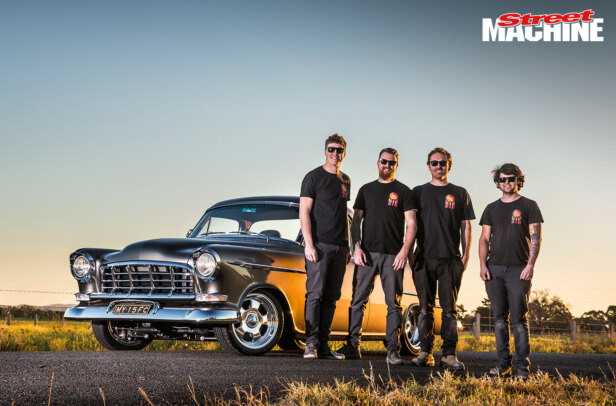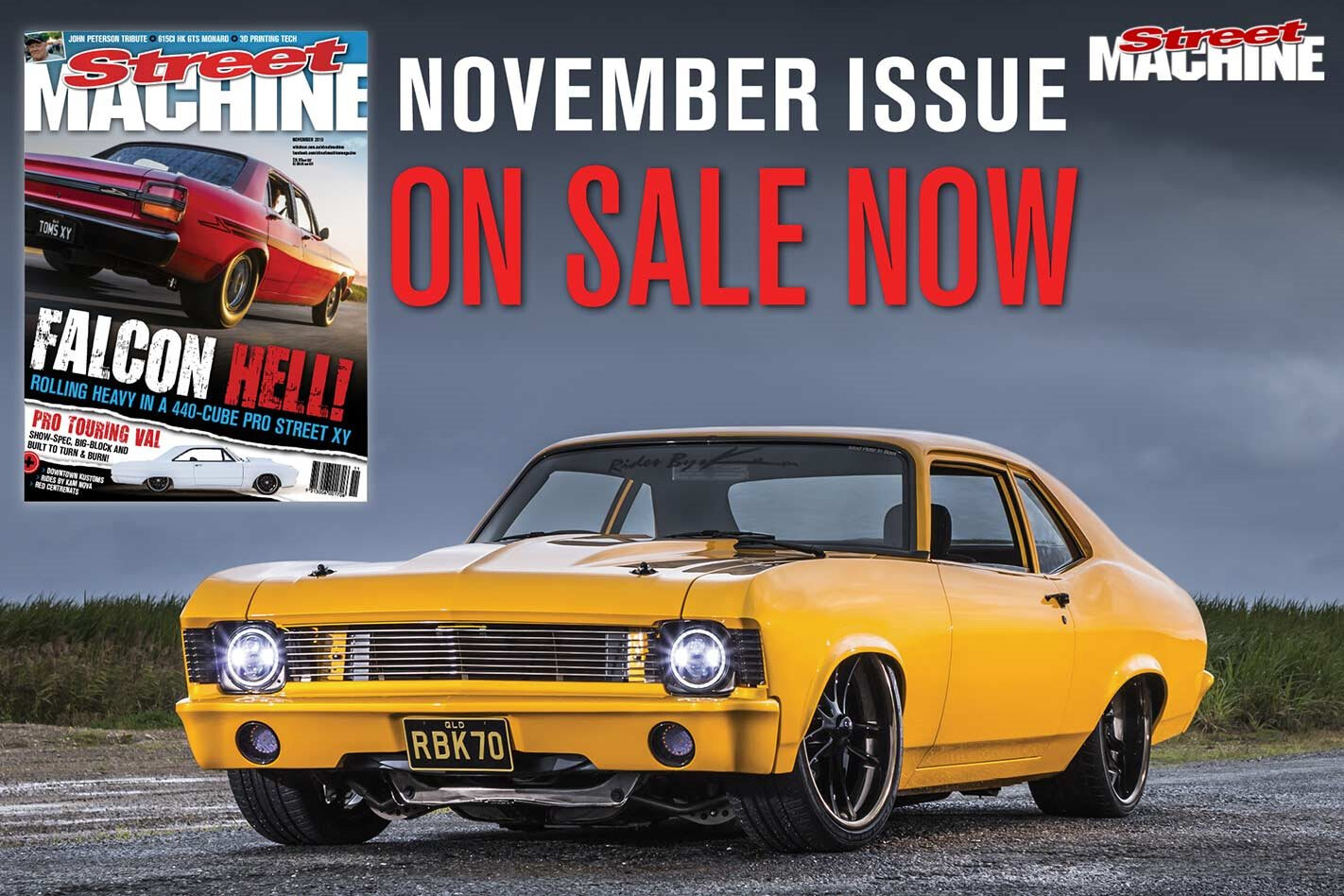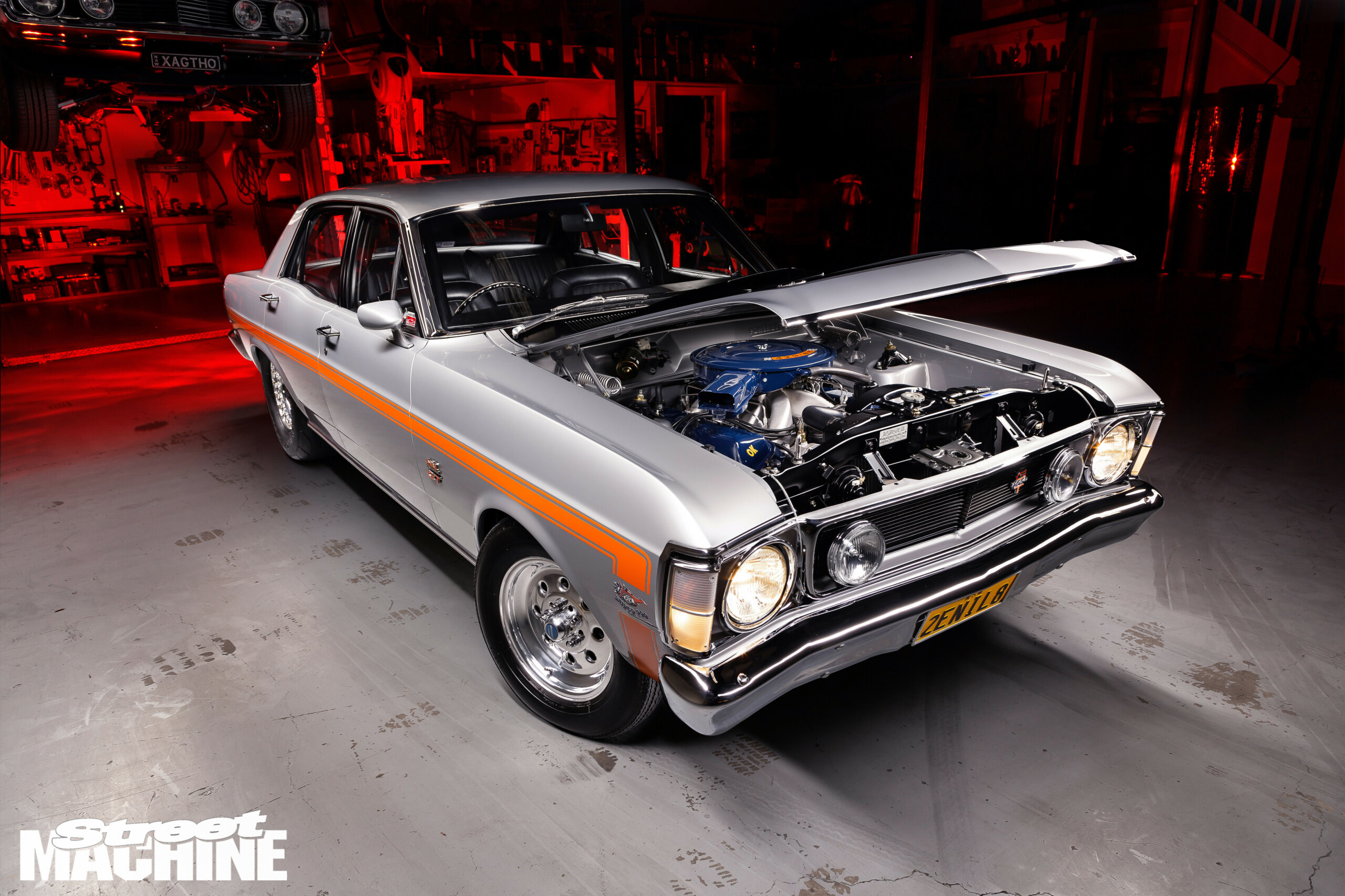DESPITE the rise in EFI and digitally controlled niceties being fitted to street machines, building killer cars is still seen as a largely analogue process. Not at Down Town Kustoms in Taree, NSW, though. The shop should be familiar to regular SM readers, having built the likes of Dave and Lyn Keen’s chopped LS1-powered FJ coupe (SM, Nov ’13); Glenn Profilio’s LS3-powered ‘Refined’ FC ute (SM, Dec ’15); and Peter Sharp’s in-the-build wide-body HQ Monaro coupe, SHQRP. Over the past few years, DTK has been moving towards incorporating higher-tech solutions to the myriad engineering problems that confront the team on a daily basis, so we sat down with DTK’s frontman Graeme Brewer to get the good oil.
This article was first published in the November 2019 issue of Street Machine
How did DTK kick off?
It all started in about 2001 when I went to the very first East Coast Cruise mini-truck meet in Sydney and was hooked. I started doing suspension as a hobby at home; people caught wind of this and soon I was doing airbag jobs amongst other chassis work. I decided to open DTK when I moved up to Forster-Tuncurry. Nine months of running the shop three days a week, on top of my regular job, almost killed me, so DTK went full-time in December 2007. I was 22 years old and, to be honest, I had no idea what I was getting myself into [laughs].
Did you get into full car builds straight away?
I was initially doing ’bag jobs, but it rapidly progressed into bigger builds. Around 18 months in Damo Parker and I discovered Troy Trepanier and that changed everything. All we could think about and chase was quality, and we wanted everything more nicely finished and working better.
Having started off in a tiny old industrial unit in the back of Tuncurry, how big is DTK these days?
We have a whole industrial complex in Taree now, and eight staff including myself. Each area has been fitted out for a specific purpose and it helps with workflow efficiency. The original Taree shop was renovated into a huge fabrication area; then we built a state-of-the-art paint shop on the opposite side of the complex, with the body shop next to that. This year we finally took the remaining space and built a sealed-up assembly area.
It sounds like you love the process as much as the finished product.
The finished cars are awesome, but I really love the build process and trying to improve that process to make things more efficient. I try to commit wholly to solving problems and making sure we do the best job on that car we possibly can.
And part of this process of best-practice is to look at new technologies, like computer-aided design (CAD)?
Designing parts in 3D on a computer saves a huge amount of time. We can design suspension systems and put them through every parameter before we do any fab work in the shop, completely eliminating trial-and-error. In CAD I can check everything – from steering clearance lock-to-lock, to moving suspension from full droop to full compression – on the screen, and it is 100 times faster and more accurate than physically making mock-up parts. Nothing ever fails, and it actually helps with engineering, as I have all the modelling done already. We know the stress points and we have eliminated potential problems.
You have a couple of 3D printers on the go; where do they fit in?
There are two basic ways that 3D printing helps in the shop. Firstly, we can prototype parts we need to make and check them on the car to ensure they fit perfectly and are going to work as designed. Once they’re tested, I can export the file and have that part CNC-machined. Secondly, we use 3D printing to make the jigs we use when fabricating suspension parts like control arms or four-link bars. 3D-printing our jigs is far quicker and cheaper than making them out of metal.
I assume you’re not talking about dancing a jig, right?
We use jigs and templates as a way of ensuring a precision fit for parts every time. It makes the parts faster to fabricate, and we know that two arms will be exactly the same size if we make them in the same jig. A jig will ensure consistency in the parts we’re making, or the piece we’re welding together, as the jig uses the plot points I’ve entered into the model in CAD. We also use 3D-printed templates for our ball-joint cups so we don’t have to go through hours of trial-and-error clearancing them; we run them on the linisher in the template and a couple of minutes later they’re perfect. If the template wears out, I just print another one.
Do you do the CNC stuff in-house?
We had a big CNC plasma table, but it took up too much space and wasn’t as accurate as we needed it to be. Because we’re building complex assemblies with tight tolerances, we need everything 100 per cent accurate. We now outsource the CNC work so everything is as accurate as the 3D CAD model.
What have you learned about the CAD stuff that people should know?
Part of getting the laser-cutting spot-on was knowing the correct K-factor to use, which is the ratio of the neutral axis to the material thickness – basically working out where the middle of the bend will be for each piece you’re folding, to ensure tighter, better-fitting pieces. In the old days you’d get something folded and it wouldn’t fit, so you’d trim it on the grinder, and waste time making it work. K-factor is important to put into my designs, because when they fold something now, it is nearly 100 per cent perfect. I have to make sure I include it into my drawings as it ensures everything fits perfectly when the part turns up in the flesh. The parts you get are only as good as the drawing you send to the CNC.
Have these replaced traditional car-building tools in the shop, or do they simply aid you by expediting the process?
I wouldn’t say the technology has replaced the traditional car-building tools; it just helps. You still need skill and your hands; we can just speed up the process and make things more accurate. Using modern facilities, equipment and technologies takes the guesswork out of the process. Without trial-and-error, the work day is far more efficient, as you get more out of every hour in the shop. The money you save there pays to make your car more bad-arse in some other way, like bigger brakes or nicer wheels.
So the technology makes the cars cheaper to build?
It’s a no-brainer. We aren’t fumbling around trying to make stuff with shit tools; we’re using the latest and greatest to make the process faster and therefore cheaper. We’re making calculated decisions and executing the job efficiently.
Does the push to bring in new technology have any drawbacks?
I have a problem when people say: “Oh, we thought you’d be too expensive,” or people think we don’t do small jobs, just because of the way the shop looks from the outside. Yes, all the cars in the shop are big-dollar builds, but that’s because of what the owners wanted, not because that is all we do. Our shop rate is $100 per hour and the tech, machinery and the team’s skill level makes us quicker on jobs, and therefore cheaper. That $100 a customer spends for an hour goes further thanks to our refined processes. It’s a simple fact that with the right facility, equipment and resources, builds happen more efficiently, and are therefore cheaper.
You guys just finished a resto on an XW GT Falcon; are restos a new area you’re looking to push the shop towards?
We love all types of builds; we’re restoring a Daimler SP250 at the moment, too. I really like the challenge, and it’s refreshing. I like working hard to find a way to nail the brief and fully replicate all the tiny details that really elevate a concours build. For builds like the XW GT, I rely heavily on the boys in the shop, who have more experience in the crash and resto industries. My team is so good that I don’t have to think much about them, plus the resto builds are easy because there are no modifications, so they happen quite quickly and are headache-free.
1. Graeme traded his epic, in-the-build ’31 tudor hot rod for this sweet airbagged ’68 Cadillac coupe so he could rack up cruise miles with the family on weekends. While his land yacht is awesome, he’s decided to move it on.
2. In just four weeks, this Gen 2 Coyote-powered ’56 F100 went from a running, driving truck to having a smoothed and boxed chassis, one of DTK’s independent front ends, parallel four-links and Watt’s link set-ups. The smooth firewall was all hand-built at DTK, and Graeme is toying with the idea of a slightly raked roof chop to suit the wheelarches being moved 70mm forwards.
3. The paint shop at DTK is a world-class facility, and doesn’t escape Graeme’s obsession with improving processes. The LED lights help highlight imperfections in bodywork, and Melomotive splines are used to not only speed up panel-beating but also keep body lines dead-accurate.
4. Graeme’s own project is this early-70s C10 pick-up. “We used my truck to develop our modular bolt-in C10 front and rear ends,” he says. While it wears 22×8.5 and 22×12 Schott wheels, the DTK team designed the AccuAir air suspension to lay the truck’s guts on the ground on bigger 24in wheels so they can fit taller tyres on the 22s – yet it still has 240mm of ground clearance at full lift.
5. This 350 small block-powered Chevy Monza came in for some front and rear suspension loving, and is now having a stack of body- and paintwork done. It has chassis rail stiffeners, and DTK tied the new suspension into the stock pick-up points. “Someone put HQ spindles in it so I made new steering arms to correct Ackermann and bump-steer issues,” says Graeme. “We 3D-printed the arms in-house, tested the steering angles and mocked up the rack, then CNC-machined the final arms.”
6. Graeme’s C10 packs a cammed and rebuilt 6.0L Gen IV LS with a Delmo’s Speed old-school dress-up kit, including the throttlebody adapter to run a stock drive-by-wire throttle.
7. The next job on the lot is this cool Sydney-based dent-side F100, which will leave DTK able to sit its chassis flat on the ground and with a 315kW supercharged Miami quad-cam V8 under its girthy bonnet.
8. One of the builds that put DTK on the map was Peter Sharp’s SHQRP wide-body HQ Monaro coupe, which is currently going through final paint. The Harrop 2300-blown LSX376 donk is being reassembled in preparation for the subframe being reinstalled.
9. Always thinking outside the rhombus, Graeme made a jig for his power hammer and Pullmax to make new sill panels for an HG Monaro in the build, speeding up fabrication time.
10. This ’65 C10 runs a 6.2L LS3 and sits on one of DTK’s full modular bolt-in C10 front ends, a full rear clip, and a DTK chassis-stiffening kit. It will eventually roll on 22in wheels; the black five-
spokes are just for mock-up. The body will be left looking farm-fresh and should be cruising Sydney streets before too long.
(L to R): Scotty Brown (fitter, turner and fabricator); Shane Penfold (panel-beater, fabricator, sheet metal wizard); James Morrison (painter, panel-beater, fabricator); Graeme Brewer (owner, CAD guru); Matt Chapman (panel-beater, fabricator); Damo Parker (fabricator, vehicle body builder).




Comments